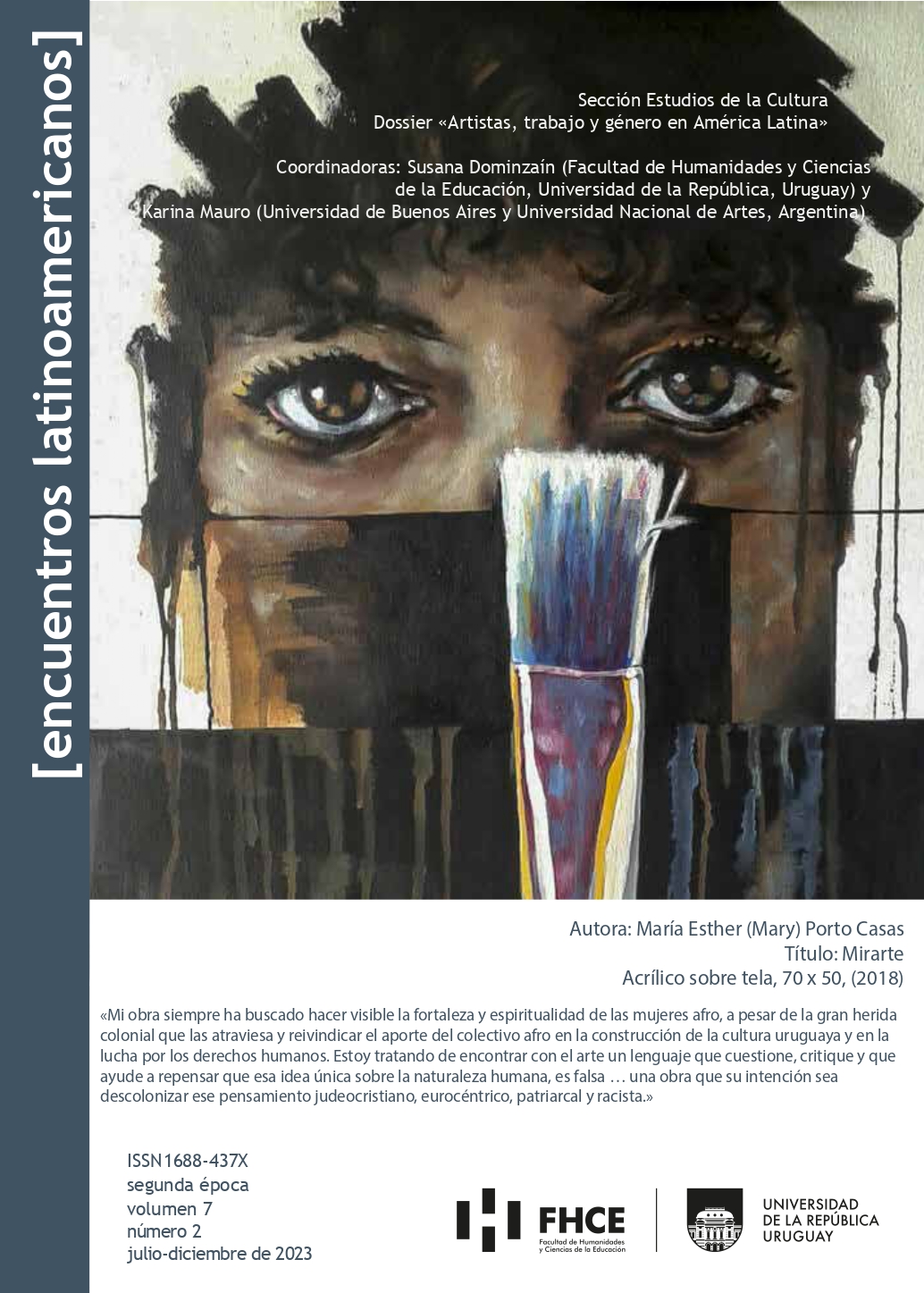The case of the Uruguayan-style Murga Esa te la Debo. Problematizations around gender, aesthetics and artistic working conditions of murguistas
Published 2023-12-28
Keywords
- murga uruguaya,
- género,
- identidades
- uruguayan murga,
- gender,
- identities
- murga uruguaia,
- gênero,
- identidades
How to Cite
Copyright (c) 2023 Victoria Cestau Yannicelli

This work is licensed under a Creative Commons Attribution-NonCommercial 4.0 International License.
Abstract
The case of the Uruguayan-style Murga Esa te la Debo. Problematizations around gender, aesthetics and artistic working conditions of murguistas. This work aims to carry out a case study of a 21st century Uruguayan-style murga called Esa te la Debo. We consider that this murga is a paradigmatic example
because it presents topics of interest from my doctoral thesis within its repertoire, as well as my performance as a stage performer. Case studies can be of two types: intrinsic and instrumental, we will address both forms. We consider it necessary to draw feminist epistemologies, to avoid androcentrism and account for the specificities of the artistic field from a gender perspective. The Uruguayan murga presents itself in a singular way depending on the context, it returns and is renewed, it is updated and transformed. What lasts over time? What are the changes? We will integrate the gender perspective as a transversal axis to all the research, we will analyze the aesthetic challenges brought by the new spaces where the murga is expanded and taught. We will
explain why it is the carnival category that has had the most impact in the Buenos Aires theater field. We will finish by questioning the identities of murguistas as workers of popular culture, taking part of the repertoire sung in their show entitled: «Surviving once again» as well as fragments of iinterviews.
Downloads
References
- Agrima, L. (2022). Semilla: breve historia de la murga uruguaya en Argentina, desde la fundación de Por la vuelta hasta las primeras murgas del siglo XXI. Argentina: Ombligo Cuadrado ediciones.
- Alfaro, M. (1998). Carnaval. Una historia social de Montevideo desde la perspectiva de la fiesta. Segunda parte: Carnaval y modernización. Impulso y freno del disciplinamiento. Montevideo: Trilce.
- Alfaro, M. (2017). Murgas. La quimera del origen. Ponencia presentada en la Primera Jornada Internacional de Estudios sobre la Fiesta, Cátedra Unesco de Carnaval y Patrimonio, Montevideo. Recuperado de https://anaforas.fic.edu.uy/jspui/handle/123456789/52337
- Arán, O. (2016). La herencia de Bajtín: reflexiones y migraciones. Córdoba: Centro de Estudios Avanzados.
- Aschieri, P. (2018). Investigartistas: Los invisibles intersticios teórico-prácticos en el arte de crear e investigar. Trabajo presentado en las Jornadas de Investigación del Instituto de Artes del Espectáculo. Ciudad Autónoma de Buenos Aires.
- Castro Lazaroff, S. (2017). Murgas de mujeres (estilo uruguayo) en América Latina. En Actas del III Coloquio de Ibermúsicas sobre investigación musical. Música y mujer en Iberoamérica: haciendo música desde la condición de género. Santiago de Chile: Juan Pablo González Editor.
- Crosa, Z. (2012). Dinámicas identitarias y modelos de integración en el movimiento asociativo de uruguayos en Argentina: hicimos la murga rioplatense para integrarnos al barrio y empezar a vivir. Papeles de Trabajo.


